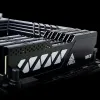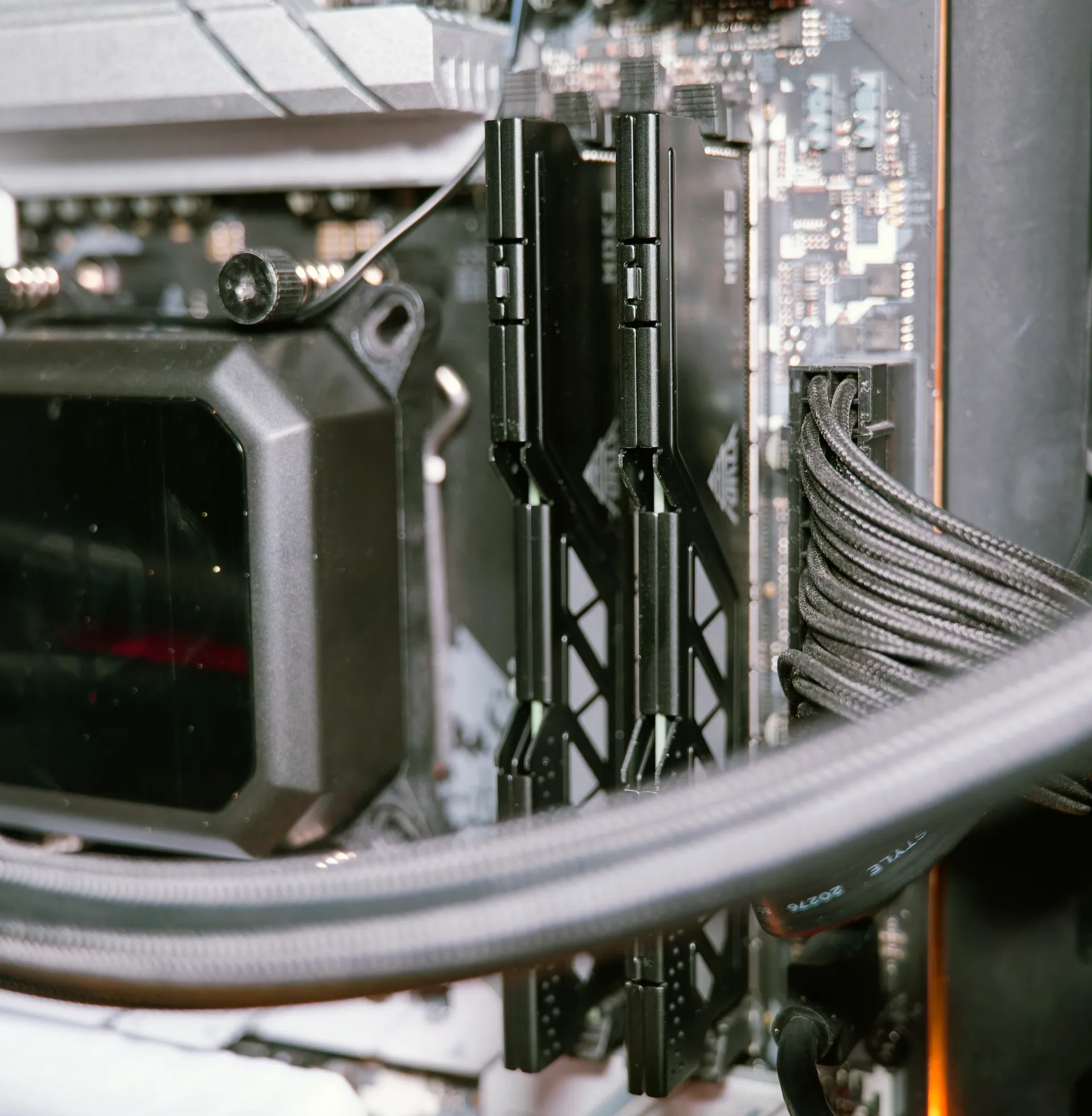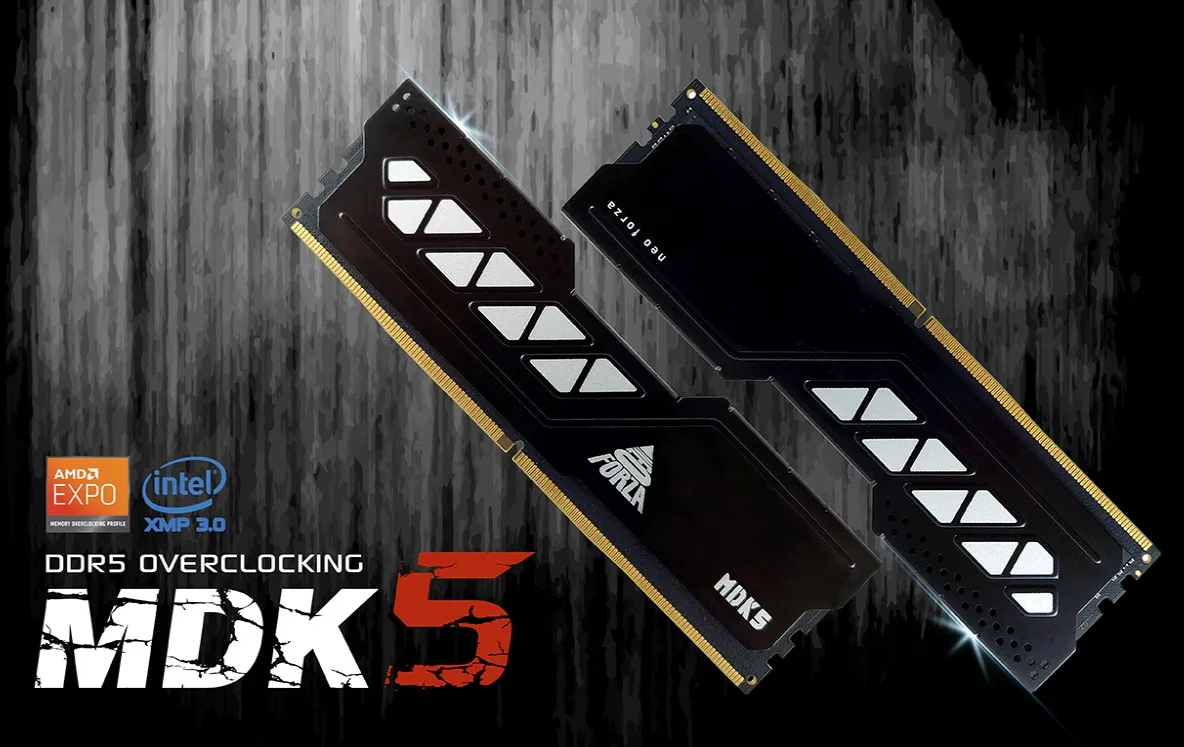NeoForza MDK5 DDR5 6000 MHz CL40 2 x 48 GB
MDK: Murder Death Kill - Is this the solution that will effectively eliminate the issue of insufficient RAM? Neo Forza MDK5 (who from you remembers the MDK game from 1997?) 6000 CL40 96 GB kit is the third one we got to look at. The previous ones were the Trinity Jetblack 6000 CL40 2x 32 GB and the Trinity DDR5 6400 CL40 2x 16GB. This Taiwanese company (founded in 2018) is a brand of Goldkey (existing since 1998) and obviously likes to provide the DDR5 sets with CL40 timing because the one we are looking at has the same main latency setting. A quick reminder - DDR5 is the newest technology to hit the market, make headlines, and break world records. DDR5 already set spectacular results in overclocking (of course, using the LN2), even at 11648 MHz. DDR4 RAMs operate on a single 64-bit bus, while DDR5 has two 32-bit buses (plus, in both cases, an additional 8-bit for ECC). As a result, a single module is identified as a Dual Channel, while two are identified as Quad Channel. However, the solution does not match the throughput of HEDT platforms with processors with a four-channel controller. The internal (A / B) channels of DDR5 RAM also share the RCD (Register Clock Driver), which provides more output signals and more extended pulse reading (8 vs. 16). The DDR5 comes with a Power Management Integrated Circuit (PMIC) from the most important things you need to know. It’s responsible for controlling voltage changes, optimizing the energy draw, and making it less demanding for the motherboard controller. The DDR4 nominal voltage is 1.2 V; for the DDR5, it’s 1.1 V. Typical XMP voltage for the older type of memory is 1.35V (sometimes 1.45 V); now, it’s mostly 1.25 V. Speaking of the XMP, till now, it was 2.0 revision, with the introduction of the DDR5 we’ve got the rev 3.0. The main difference is that the number of profiles has increased from three to five (three for the manufacturer settings and two placeholders for the users).
After this short introduction – let’s present a bit of the review sample. The MDK5 series from the Neo Forza offers frequencies up to 7800 MHz (the same as the Trinity/Trinity (Jetblack), with the kits up to 4 x 32 GB. There are no color variants; it’s “only” available in black. Our sample has a 6000 MHz clock, CL40-40-40-77, at 1.3 V, but it is a 2 x 48 GB kit with massive memory. Opposed to the majority of the DDR5 RAM available for sale today, the higher-capacity memories are dual-ranked. The ICs are placed on both sides of the PCB. In theory, it should increase the bandwidth and allow the filling of less RAM slots to achieve the same capacity.
The highest frequency kit from this series has 7800 MHz CL36 at 1.45 V, which sounds good. There’s no RGB available, but still on the other side – there’s an Intel XMP profile and the AMD EXPO! (for both 6000 MHz and the “backup” 5600 MHz). The height of the memory module is 38 mm (1.5 inches), so it’s a low-profile form, which shouldn’t cause any problems with the (air) CPU coolers. We’ll check the kit on two platforms, with Z790-based motherboards (Asus Z790 Maximus Hero) combined with the Intel Core i9 13900K and the Asrock X670E Steel Legend combined with an AMD Ryzen 9 7900X. The used GPU is the Nvidia Geforce RTX 4090, so it shouldn’t be a limiting factor for memory performance. We are traditionally going to try and squeeze something more out of it. You can always stay safe and stick to the advertised frequency and latencies using XMP 3.0. The default parameters and visual aspects look reasonable – we must check the performance then. The MSRP is 263 USD. A limited lifetime warranty backs the Neo Forza MDK5 series. Ok, next page, please.



